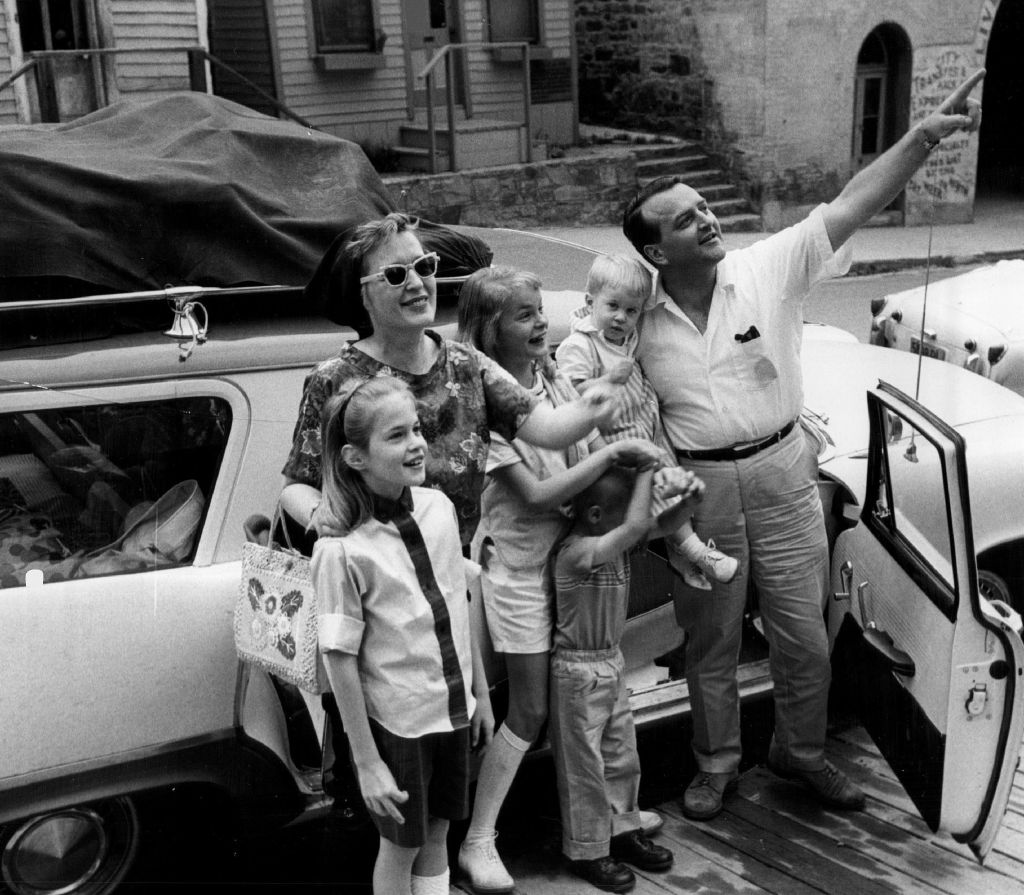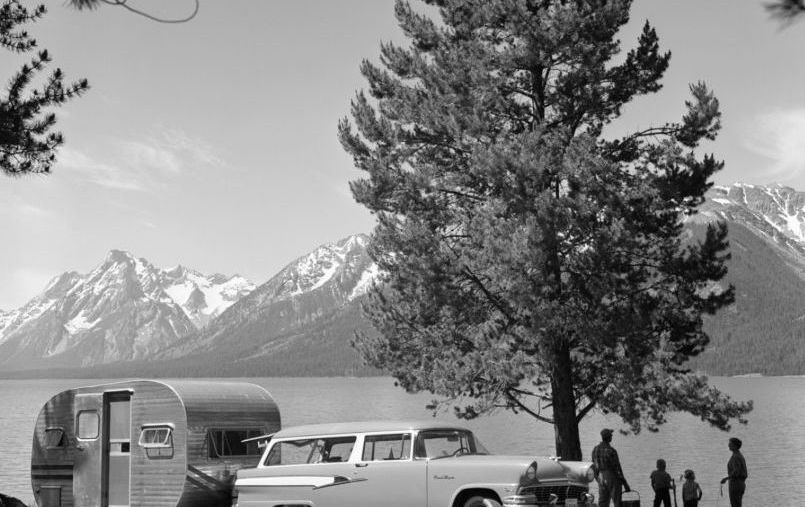
The American Station Wagon Is Dead-Long May It Live
Buick announced today that the last American station wagon-the Regal TourX, will go out in 2020. Here’s a brief station wagon history. Though it has almost been like the walking dead, station wagons have always been integral to America. It will live on as the SUV and especially crossover.
Wagons started in a manufacturer’s commercial lines-like a pickup or delivery vehicle. It evolved and changed with the times and culture. In most ways, the current SUVs are really just station wagons.
When cars transitioned from buggies into powered vehicles, the station wagon was always among the models produced. They were called “depot hacks” because they hauled luggage at train depots. Depot hacks were used mainly for east coast hotels and resorts to haul people and luggage. They were fixtures and status symbols of the monied and their leisure time spent at summer homes or fancy resorts.
They were “depot hacks” before they were station wagons
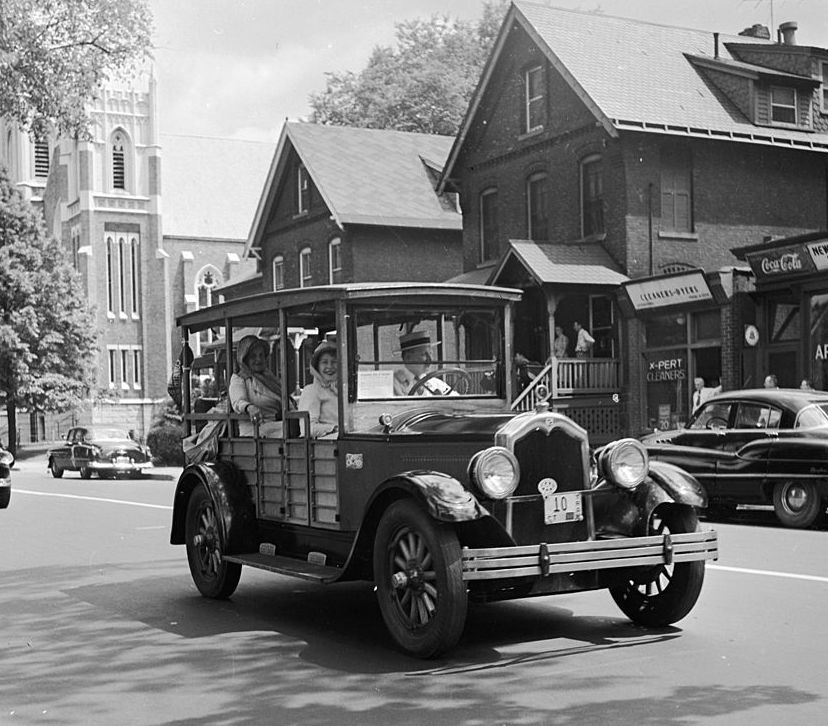
Made from hardwoods like ash or maple, they were usually built from the manufacturer’s passenger car metal cowl and floor. Some specialty body shops built wagons from trucks, but these were for hauling firemen to forest fire lines or surveyors or geologists working as teams in rugged or remote destinations. National Geographic magazine usually had one or two of these truck woodies.
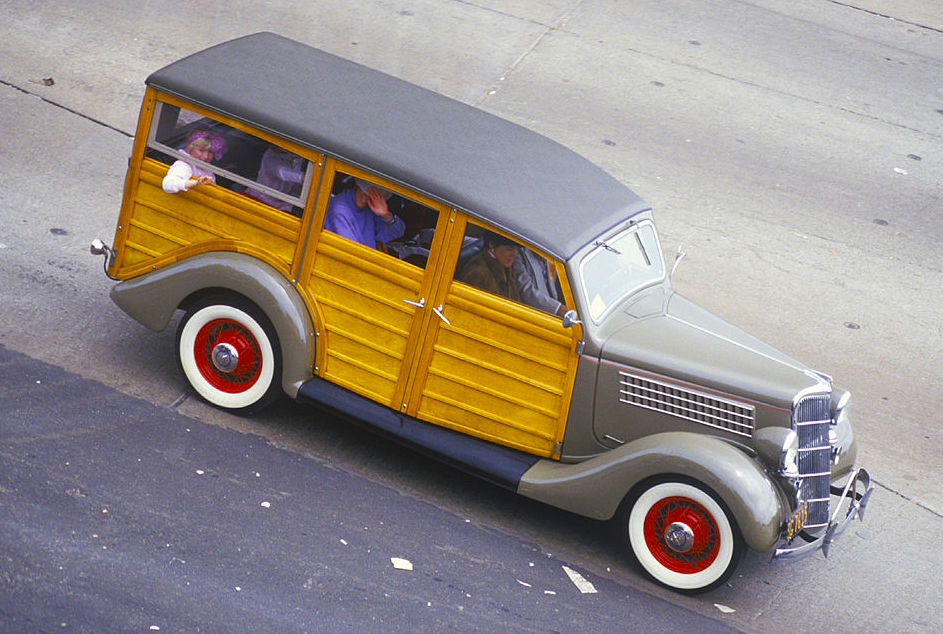
The depot hack moniker transitioned into a “station wagon.” Wooden station wagons were stored for the winter and usually received a new coat of varnish for a fresh appearance in the new season and to preserve the wood. Once it was sold to a private party or business concern, the maintenance became less critical and the slow decay commenced.
An integral part of the American fabric
In time most woodies deteriorated and were scrapped or left in fields to rot. The most expensive in a manufacturer’s model line when new, they became the cheapest once deterioration started showing. Manufacturers wanted to find a better method of making the bodies. But the results would have to wait until after WWII.
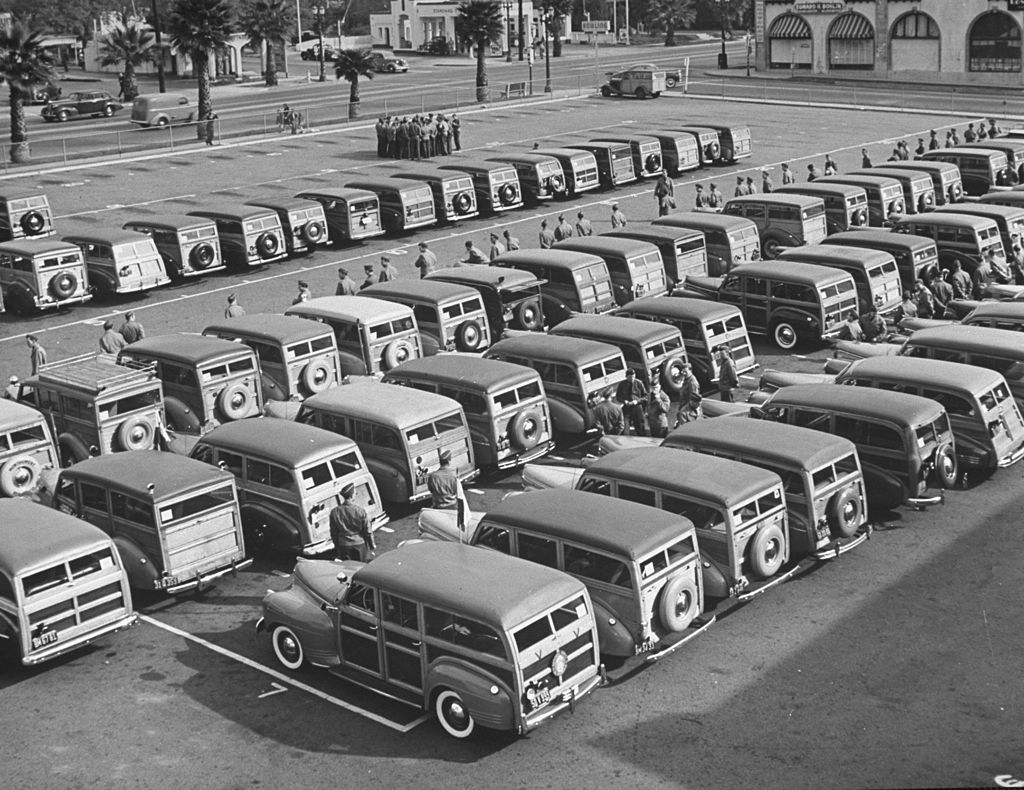
During the war, station wagons were a critical part of military motor pools. But, the fancy wood was usually painted drab green just as other military vehicles were.
The station wagon evolves
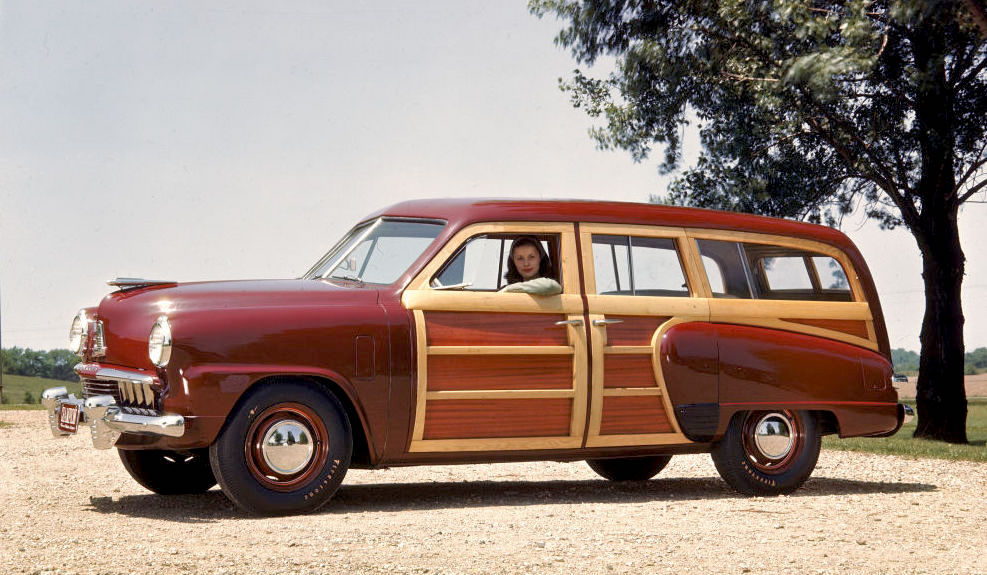
The first real evolution in station wagon development started in the late 1940s when they began to be constructed with a steel body and wooden inserts. The wood was no longer structural but decorative, yet integrated into the body.
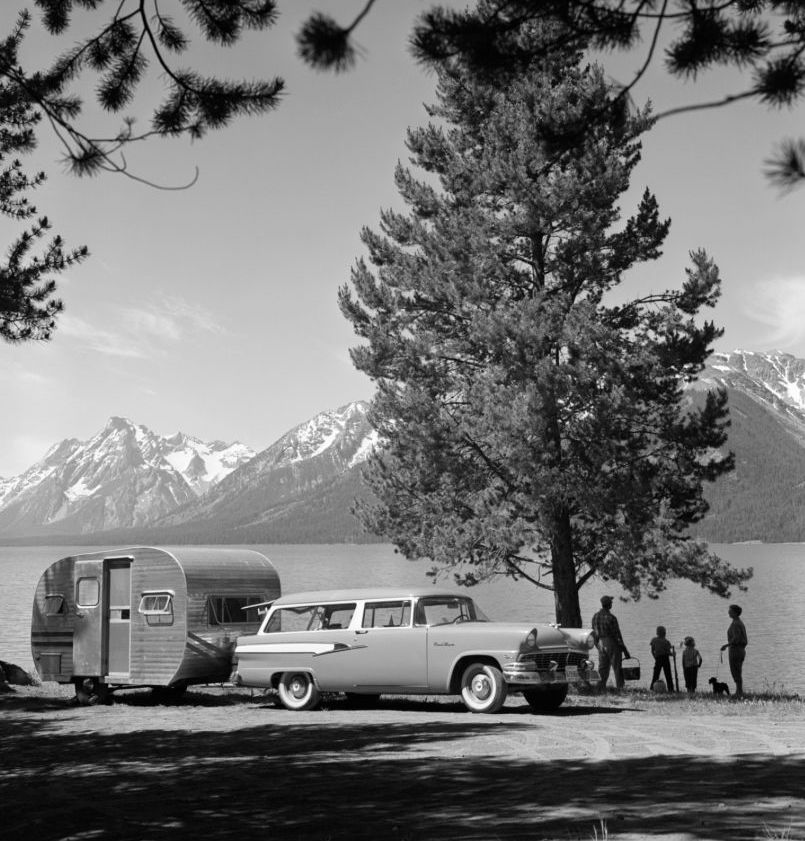
Quickly that transitioned into completely steel bodies with wood planted onto the outside skins. By the mid-1950s, the wooden surrounds were replaced with fiberglass or plastic simulated wood. Also, many station wagons came without the fake wood, painted instead with bright two-tone colors.
With the modernization and elimination of maintenance, the station wagon became a lot more popular. The baby boom and outdoors lifestyles coming into vogue made the wagon the perfect vehicle.
A symbol of the post-war surf craze
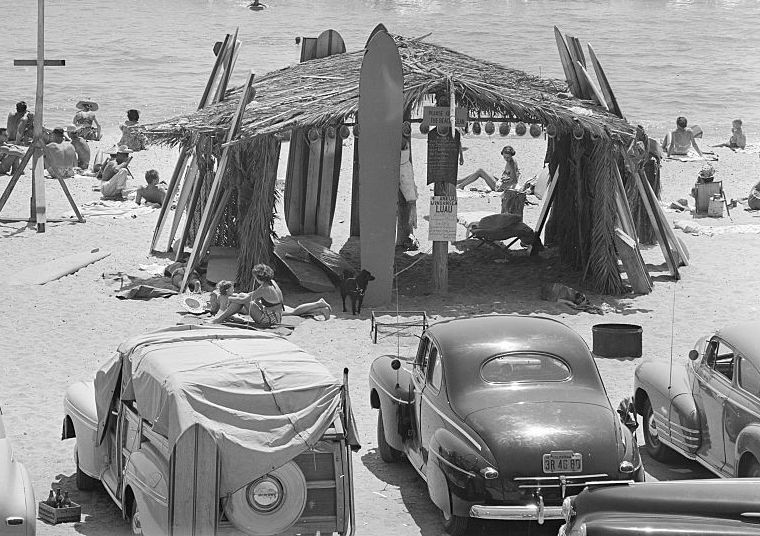
As surfing became popular in the late-1950s the cheapest transportation for hauling your boards and buddies was a clapped-out woodie. The sand and saltwater didn’t matter because by this time most woodie bodies were rotting away. If it broke down it was worth so little it could be left at the roadside for the junker to haul away. You quickly found another one and continued surfing.
Station wagon stigma
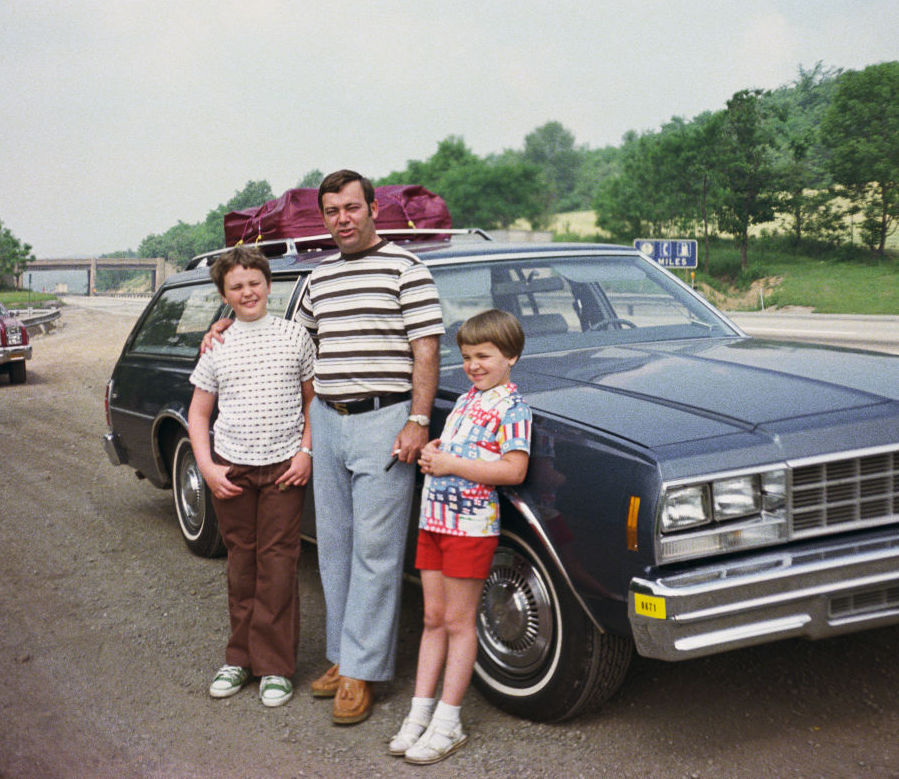
As baby boomers became adults there was a backlash to the station wagon. The vehicle so ubiquitous to atomic families of the 1950s and 1960s was looked at with disdain. It was now a symbol of what your parents drove, which started the slow decline leading up to recently.
For a while, the minivan took its place. But in a generation, it too became stigmatized. But, many liked the higher seating and versatility it provided which morphed into the SUV. An SUV is just a slightly taller station wagon, especially the crossovers built from passenger car bodies. In many ways, we’ve returned to those days of the 1950s when station wagon popularity soared.
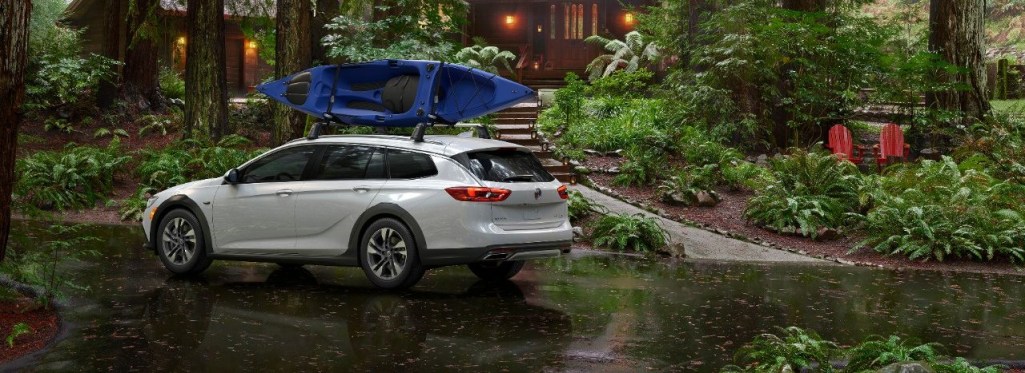
The Buick TourX is the last station wagon offered by an American manufacturer, but even it is not American. It is built by Opel, formerly General Motors’ German subsidiary. It sold just a few thousand a year, and really was never a part of Buick’s future direction. Now Buick’s entire lineup will be SUVs.
A symbol of the elite
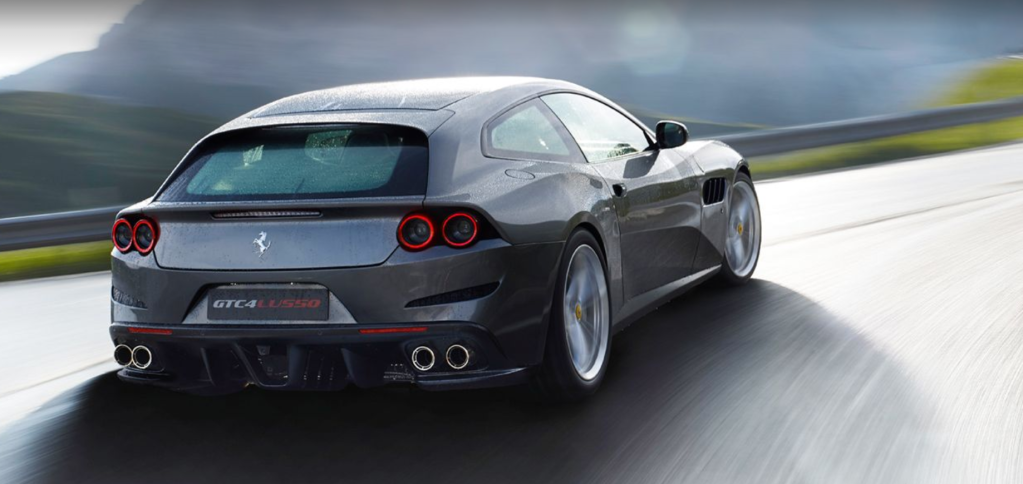
Wagons are still built by European manufacturers. Mercedes, BMW, Audi, and even Porsche and Ferrari make them. Ferrari’s GTC4Lusso T may be the ultimate expression of the sporting wagon.
But, it’s interesting that the station wagon is now manufactured by the premium manufacturers in Europe. Wagons are going back to becoming symbols of prestige and status. What goes around comes around.
